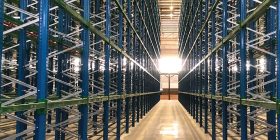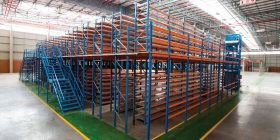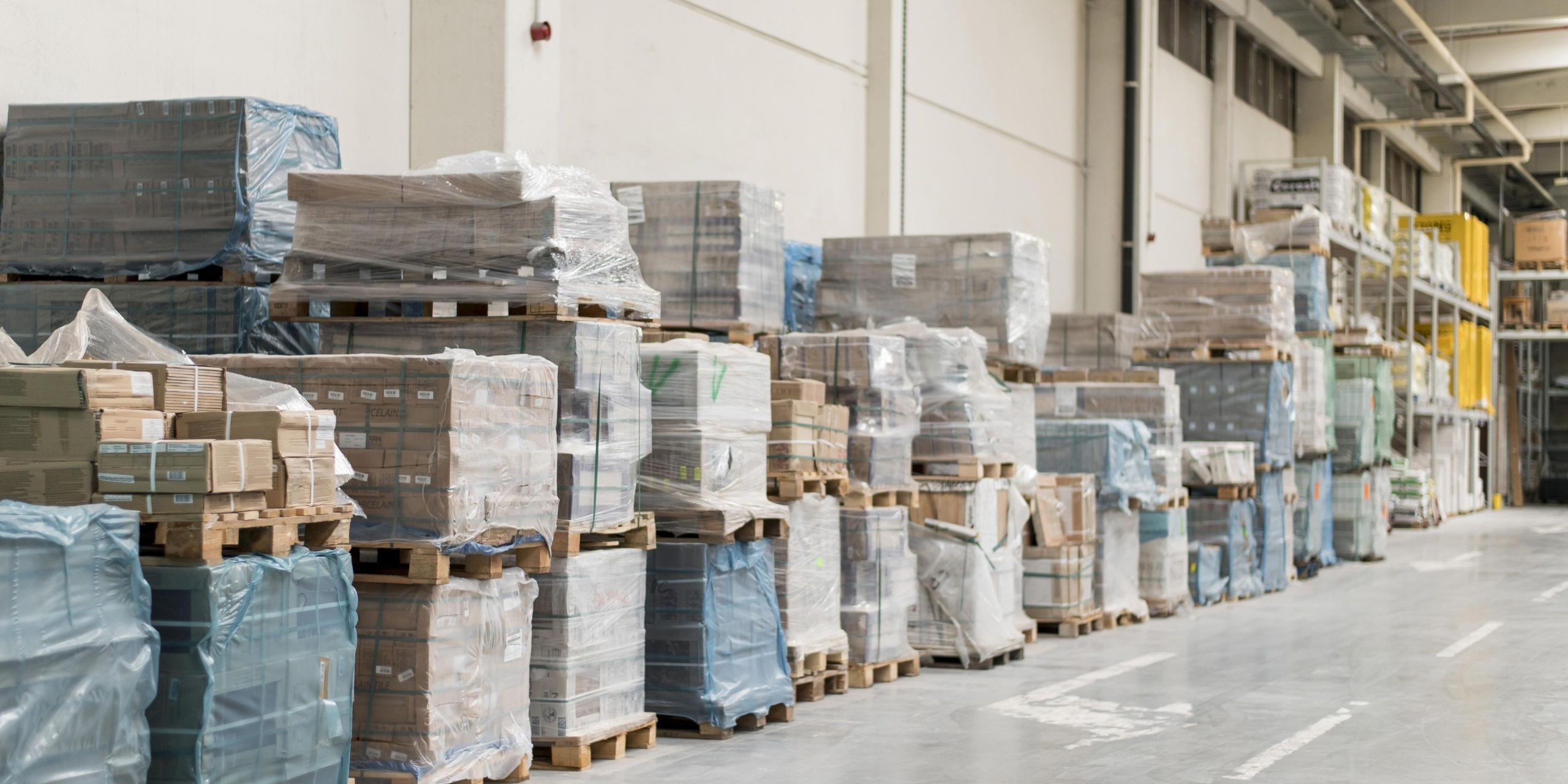Block Stacking vs. Warehouse Shelving: Key Choices for Your Storage Setup
When thinking about block stacking vs. warehouse shelving, the real question is: what works best for your space, stock type, and how regularly you need access? While both methods offer their pros and cons, choosing the right option can make a big difference in how smoothly your warehouse runs.
Block stacking is as simple as it gets; you place palletised goods directly on the floor and stack them on top of each other. It’s low-cost and quick to set up, making it ideal for large, uniform stock that doesn’t move often. But if your products vary, or you need regular access, this method can slow things down. Pallets at the bottom are harder to reach, and any shifting in the stack could risk damage.
Warehouse shelving offers smart use of space, both vertical and horizontal. This system allows easy access to every pallet without disrupting others, unlike block stacking. It supports faster picking, better organisation, and safer handling, especially in warehouses handling mixed stock.
Comparing Safety and Accessibility: Block Stacking vs. Warehouse Shelving
In the debate of block stacking vs. warehouse shelving, safety and access are two of the biggest factors. You’re limited in how high you can go with block stacking, usually two or three pallets high, based on weight and stability. The stacks are more likely to collapse or shift, particularly during busy operations without a supporting frame.
Shelving systems are built to handle taller loads safely. The structured design keeps products stable and workers protected. It’s also easier and faster to pick items from shelf units, which helps businesses running a first-in, first-out system. If you’re contrasting block stacking and warehouse shelving for daily pick rates and staff safety, shelving clearly holds the upper hand.
Space Efficiency: Block Stacking Compared to Warehouse Shelving
One of the biggest considerations when looking at block stacking compared to warehouse shelving is how each uses the space. Block stacking gives the illusion of high density but needs open floor space around the stacks for forklifts and manual handling. This generally means wasted space between rows and limits how tightly things can be packed.
Warehouse shelving is specifically designed to fix that. Shelving gives better space density and fits more stock into the same floor area by building upwards and reducing the need for wide aisles. This is a big advantage in growing warehouses or smaller sites where every square metre counts. Shelving proves to be the better long-term strategy for anyone contrasting block stacking and warehouse shelving with space use in mind.
Choosing What’s Right: Block Stacking vs. Warehouse Shelving for Your Needs
Deciding between block stacking vs. warehouse shelving isn’t just about upfront cost; it comes down to how frequently you need access, how safe you want things to be, and how well you want to use your space. Block stacking is good for bulk storage of the same item, but shelving wins when you want organised, efficient, and safe operations.
Shelving gives you the flexibility to adapt for warehouses with changing stock, shifting layouts, or growing needs. Block stacking, compared to warehouse shelving, might look cheaper at first, but shelving saves time, reduces product damage, and boosts overall productivity in the long run.
Block Stacking vs. Warehouse Shelving: A Comparison for Optimised Floor Space Utilisation
Are you keen on making the most out of every square metre of your warehouse? That’s where the consideration of block stacking vs. warehouse shelving becomes pivotal. Experience shows that shelving often provides greater flexibility and smarter use of space.
Analysing the Differences
Each system’s function becomes apparent when analysing block stacking and warehouse shelving.
Block Stacking: This method involves putting goods directly onto the warehouse floor, one on top of the other in a stacking manner. Initially, it seems simple, but the usable height gets limited pretty quickly, often to two or three pallets high. There’s no safe way to stack further without risking product damage without built-in support.
Warehouse shelving: In contrast, warehouse shelving optimises vertical space. Instead of building out, shelves are constructed at multiple heights to make every bit of height count. This strategy drastically improves floor space usage, offering better control, especially in tighter layouts, whether for bulk stock or fast-moving items.
Why Warehouse Shelving Holds an Edge over Block Stacking
Putting block stacking up against warehouse shelving can highlight the difference significantly in day-to-day operations.
Block Stacking Issues: This technique can lead to access issues. For instance, you might need to move several pallets around just to reach the one you need. This movement slows down picking and increases the chances of products getting damaged. The somewhat unstructured manner of block stacking regularly leads to unnecessary work.
Warehouse Shelving Benefits: On the contrary, warehouse shelving keeps everything visible and readily accessible. Staff can direct themselves to the precise item they need, eliminating unnecessary rearrangement of goods. Plus, the benefits of adjustable shelving make it easy to adapt the layout when the stock changes, making it particularly useful in dynamic environments with high product turnovers.
A Smart Storage Showdown: Block Stacking vs. Warehouse Shelving
The bigger picture comes into view when you contrast block stacking and warehouse shelving. Stacking may provide short-term cost advantages, but shelving draws long-term gains. It offers better space utilisation, ensures a smooth workflow, and promotes safer handling practices.
Choosing between block stacking vs. warehouse shelving is about the upfront investment and extracting more value from your space, your time, and your team. You can yield a far more navigable and productive warehouse with a strategic shelving system in place.
Block Stacking vs. Warehouse Shelving: Making Space Work Smarter
The choice isn’t about where items are placed when we consider block stacking vs. warehouse shelving but it’s also about how well space is used, how safely goods are stored, and how easily staff can work. At Krost, our shelving systems are designed to turn every square metre of your warehouse into practical, productive space.
Block Stacking vs. Warehouse Shelving: Which Saves More Space?
The difference between block stacking and shelving lies in how efficiently each uses available space. Block stacking involves placing palletised goods directly on the floor and stacking them upwards. However, you’re usually limited to two or three tiers due to safety concerns. That means much of your building’s vertical capacity goes unused.
Shelving quickly stands out when we look at block stacking vs. warehouse shelving from a space perspective. Our systems are built to go higher and to keep products secure at every level. That means fewer open areas overhead and more storage without expanding your warehouse footprint.
Contrasting Block Stacking and Warehouse Shelving for Daily Operations
In our day-to-day use, the pros and cons of block stacking compared to warehouse shelving are clear. Block stacking can be simple but often leads to extra work. To reach a pallet at the bottom of the stack, others above must be moved. This slows down picking, increases handling, and exposes goods to damage.
Warehouse shelving, on the other hand, keeps everything accessible. Each item has its place, with no need to shift stock to get what you need. Compared to block stacking, it’s more efficient, safer, and quicker.
Block Stacking vs. Warehouse Shelving for Long-Term Growth
Planning for growth means choosing a system that’s easy to change and expand. Block stacking is fixed in what it can handle, adding more goods quickly clutters the space. In contrast, shelving offers flexibility. At Krost, we’ve made it effortless to adjust rack layouts, add to existing structures, or upgrade systems entirely.
When we talk about block stacking compared to warehouse shelving, we’re really talking about short-term savings versus long-term value. Shelving may need a bigger upfront investment, but it pays off through better use of space, reduced damage, and a safer workplace.
Block stacking vs. warehouse shelving is a decision that shapes how your warehouse runs today and how it grows tomorrow. At Krost, we believe that smart storage makes a smarter business.
Maximise Your Warehouse’s Potential with Krost Shelving & Racking
After weighing the pros and cons of block stacking versus warehouse shelving, it’s evident that shelving optimises space and enhances safety and efficiency within your warehouse operations. By choosing a superior shelving solution, you ensure your business is not just getting by, but truly thriving through smarter storage strategies.
At Krost Shelving & Racking, we design systems tailored to unlock your warehouse’s full potential, making every square metre work harder for you. Why settle for less when you can make the most of your space with confidence and ease?
Explore the transformative power of our shelving systems for yourself. Contact us today to discuss how we can help you elevate your warehouse operations to new heights.











